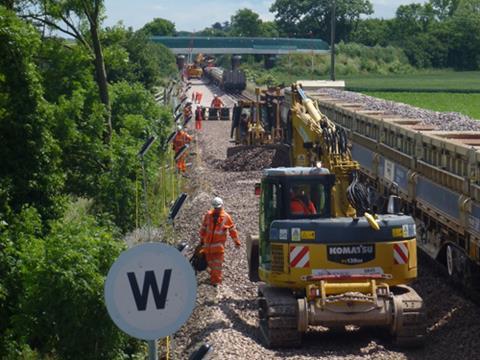
UK: Network Rail has adopted the University of Salford’s Thinklab tool to support its track renewal programme. Thinklab is a UE4-powered 4D simulation platform intended to model engineering possessions in a virtual simulation environment.
NR is using the tool to improve the efficiency, cost and time it takes to deliver a package of renewals. ‘In the past it would take a full week to plan a weekend’s work’, says Steve Naybour, Head of Transformation at NR’s South Alliance. ‘This effort can now be reduced to a few hours using the new tool.’
It enables Network Rail to build a 3D model of any site from a range of data sources. Virtual tracks are positioned onto 3D digital terrain from CAD or laser-scanned track data. Building Information Modelling data is used to add overhead line equipment, ballast, sleepers, rails and signalling equipment to give a more accurate representation of the physical site. And a library of equipment can be used to include plant and machinery in the simulation.
Users can define the resources needed to complete the project and build a timeline of activities, with task interdependencies mapped. Costing functionality in the software provides an accurate view of the financial impact of the choices made. As planning progresses, the software automatically simulates the work, offering views from a number of angles, at different levels of magnification and at different speeds.
Any changes in planning assumptions or data input can be immediately represented in the simulation. This results in much shorter feedback loops compared to conventional approaches, because engineers, designers and planners do not have to rely on computer modelling specialists to see the implications of any changes.
Thinklab puts particular focus on modelling of equipment needs. ‘Whereas we might have used five pieces of equipment for a job, we can often use two or three’, says Stephen Kearney, Head of Development at NR’s S&C Alliance South East. ‘With this package, we can see and prove what we will need in advance.’

